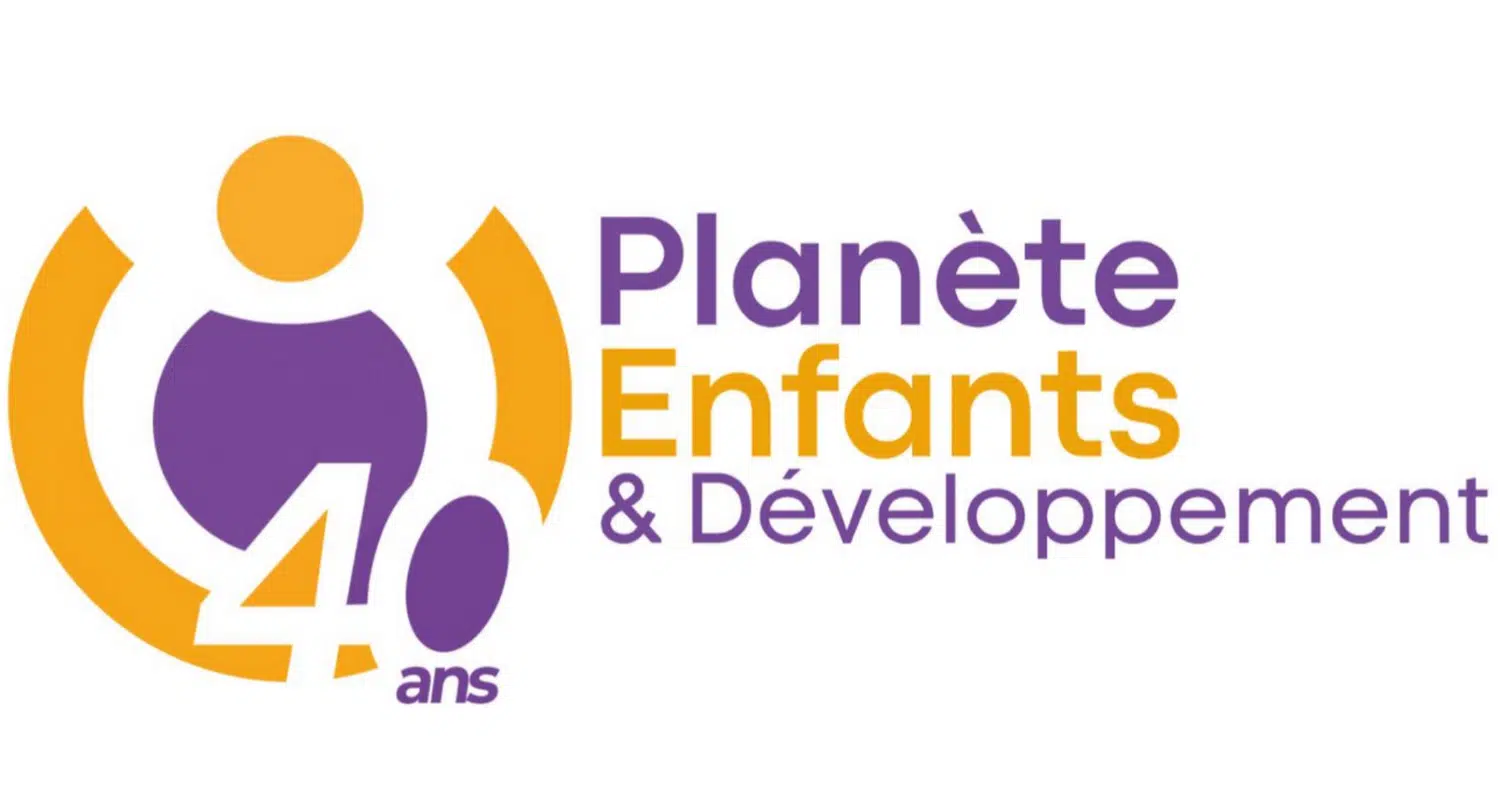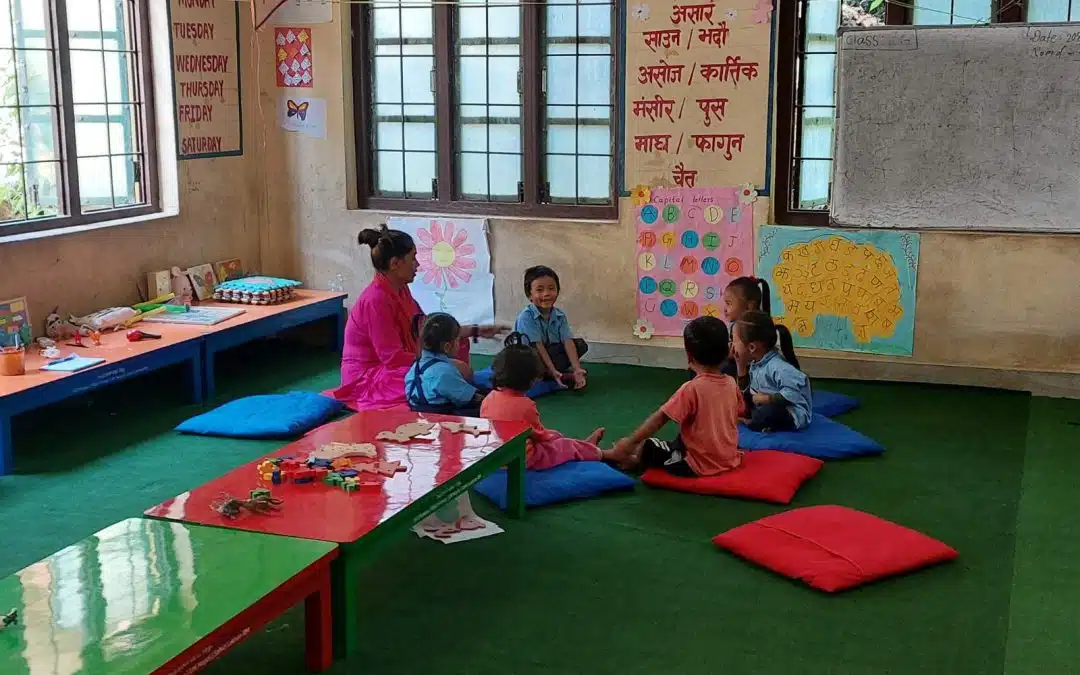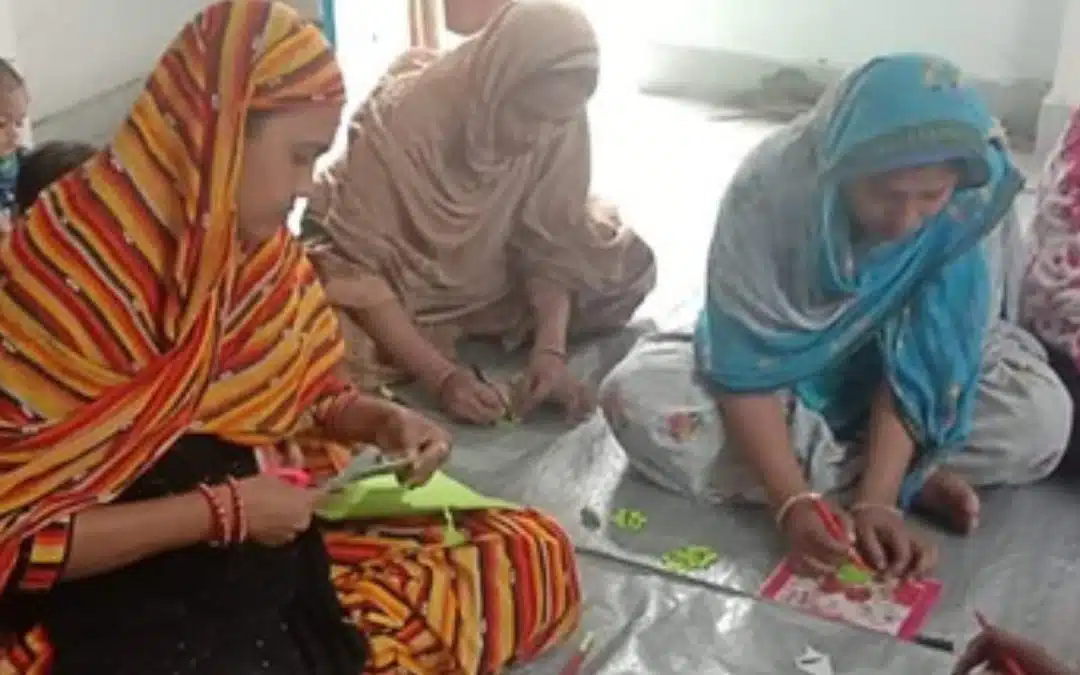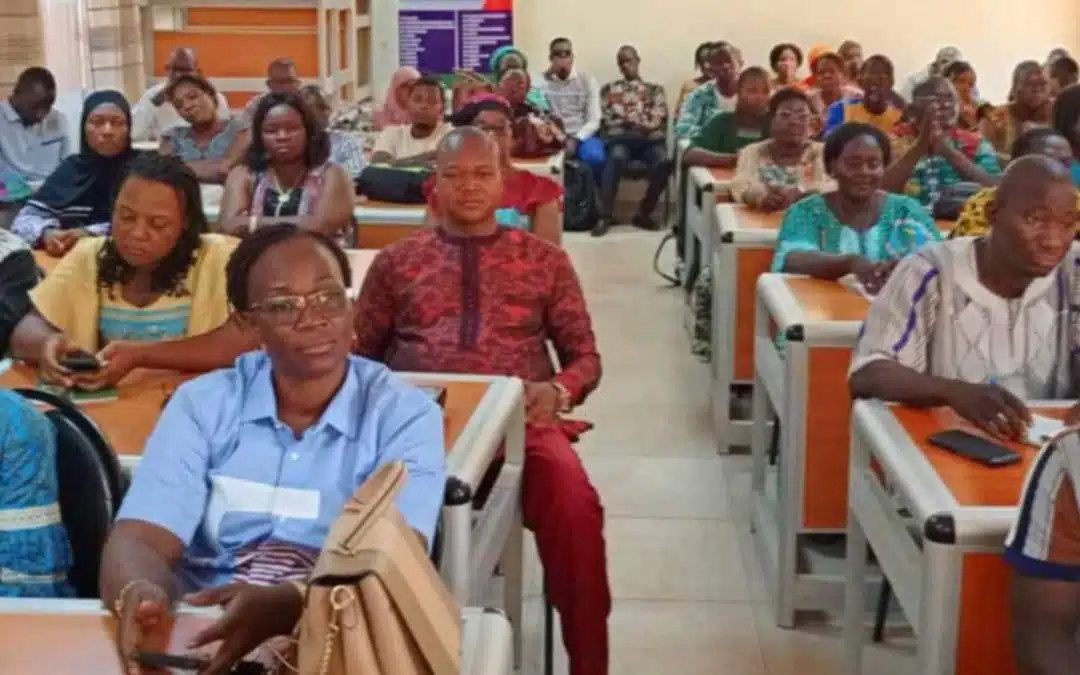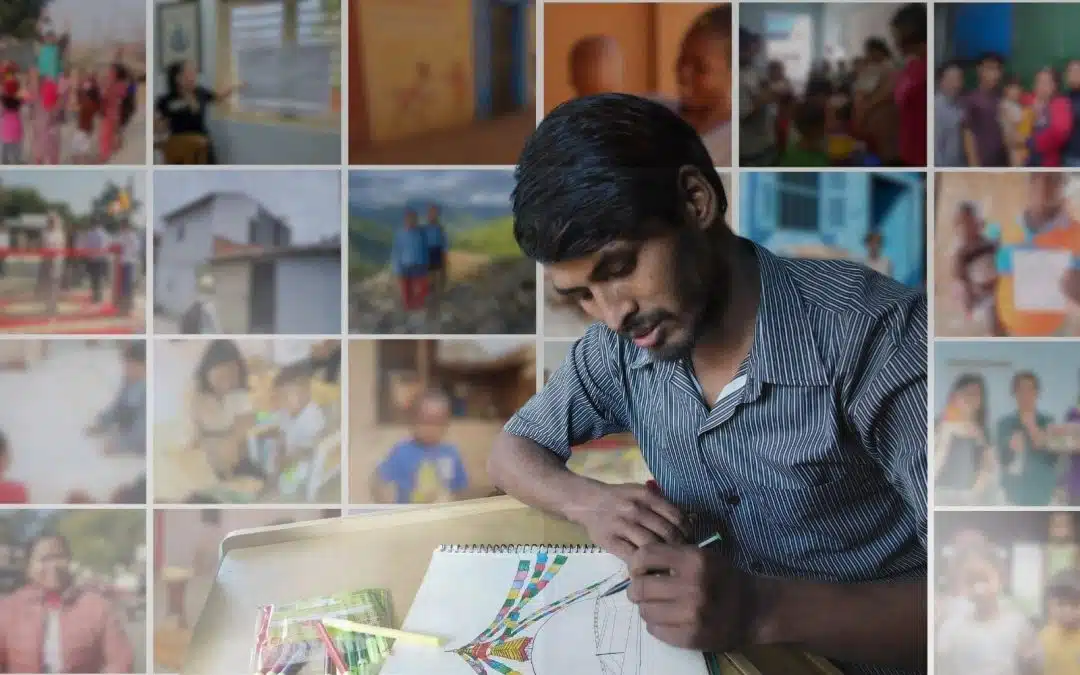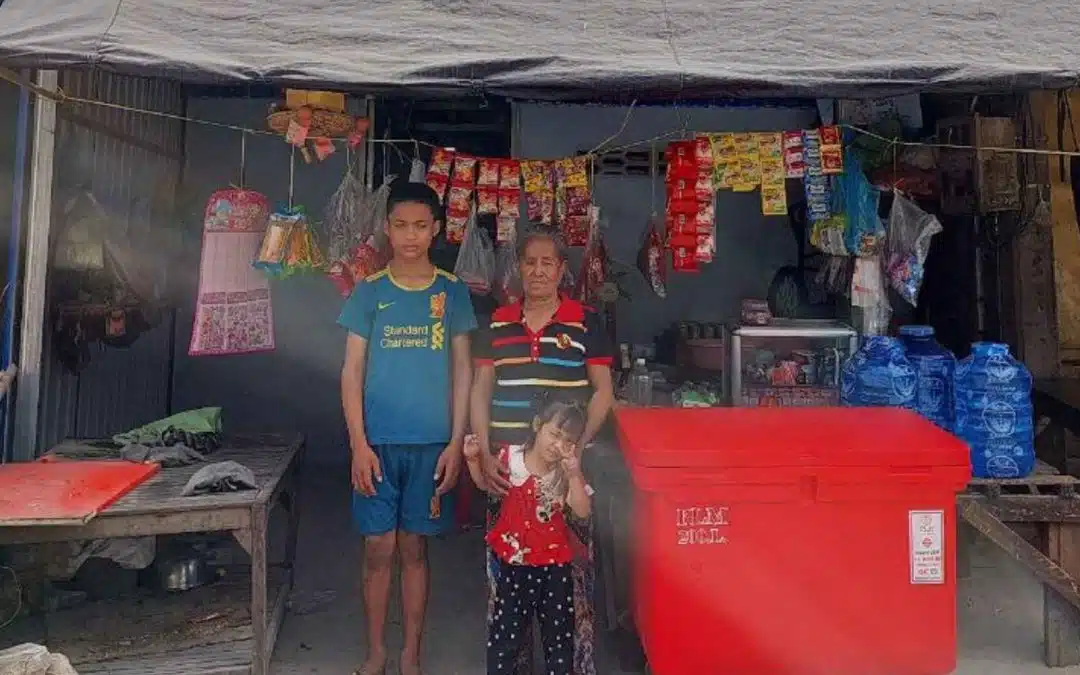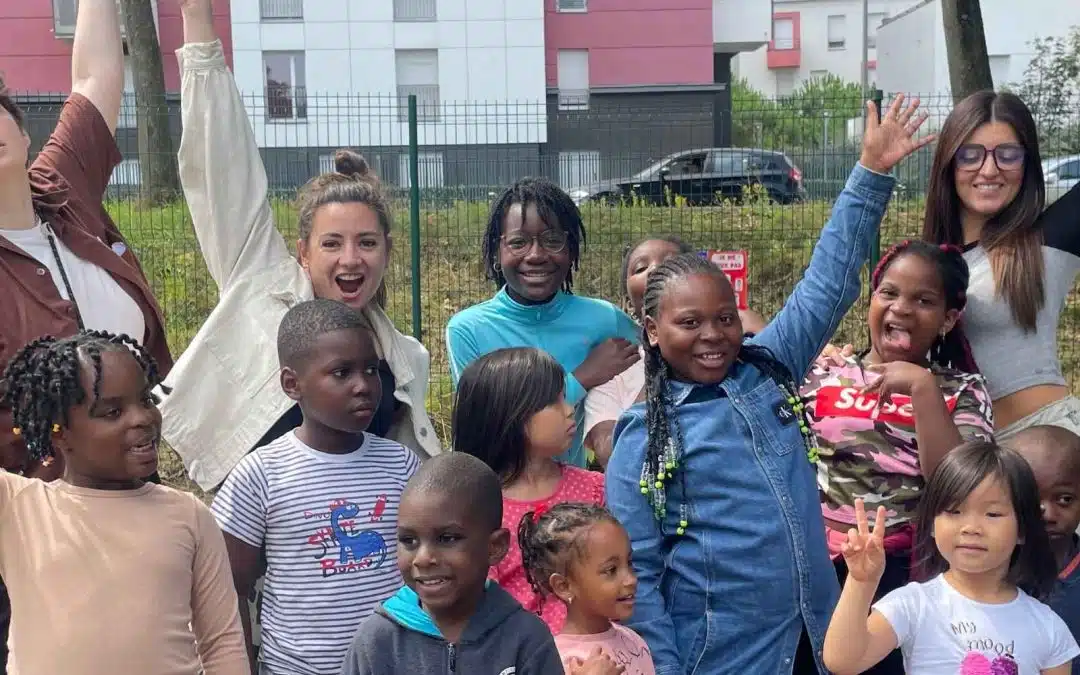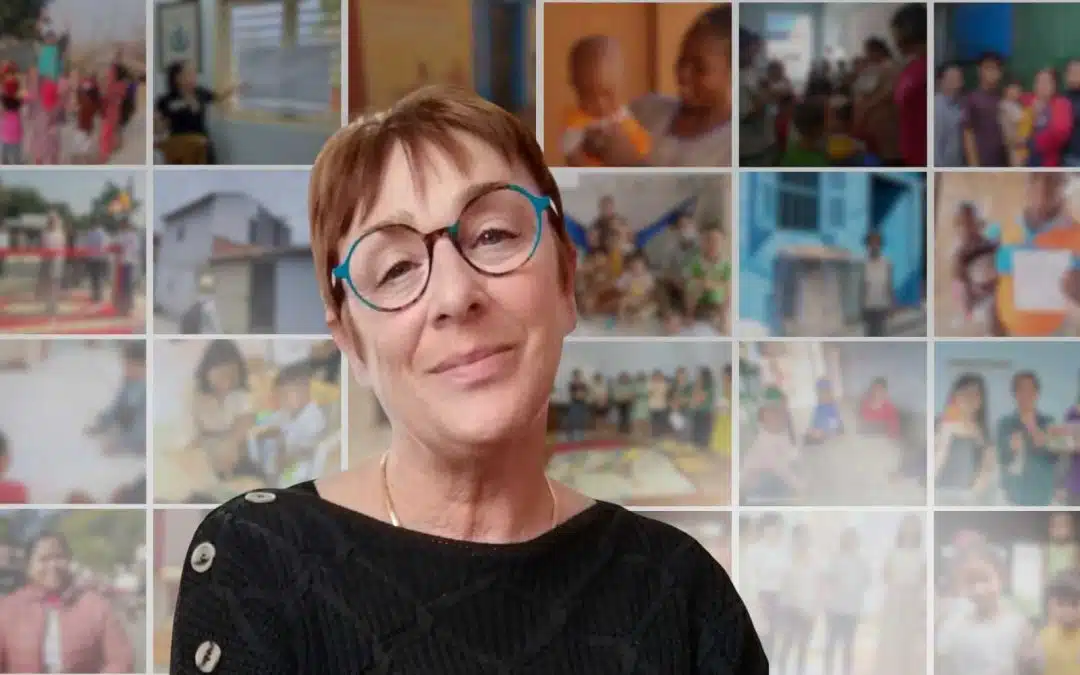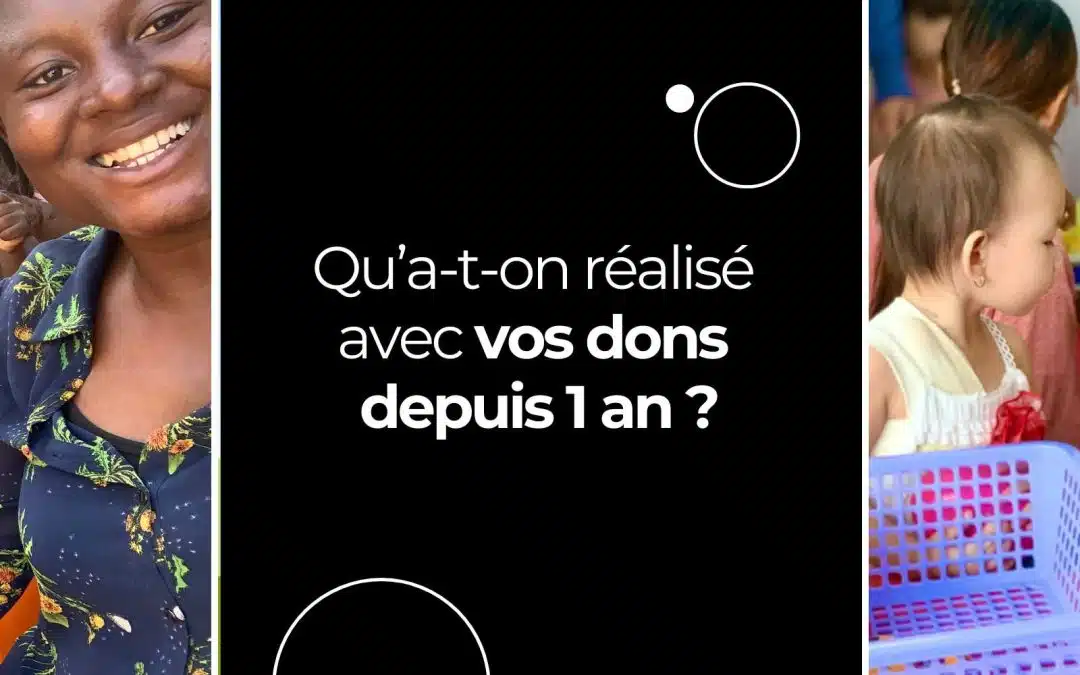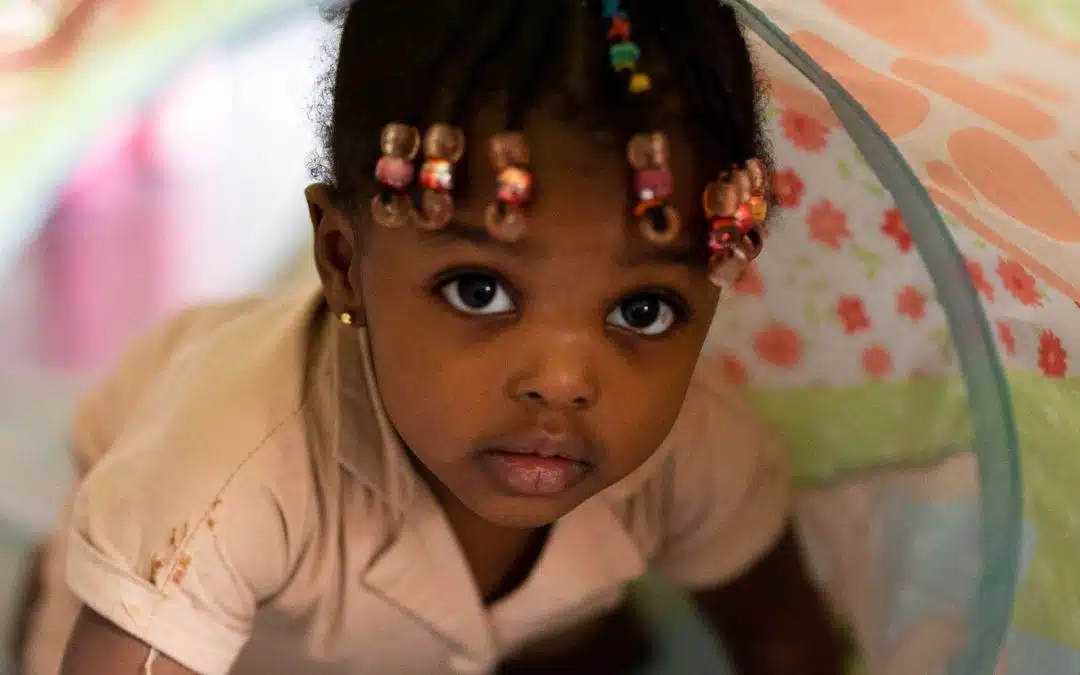Monday, November 6:
 Between the jet lag, the cries of stray dogs, and the noise of the first workers at 5:30 am, the night was short.
Between the jet lag, the cries of stray dogs, and the noise of the first workers at 5:30 am, the night was short.
Veronique, co-director of Planète Enfants & Développement, joined me in the night. We are settled in a small Newari house, redone just after the 2015 earthquake.
On the way to the office, the district of old Patan takes another face than the one of the day before: the sun illuminates the colored flags and the wooden windows which one hardly guessed in the night. In the streets, the freshness is a little preserved and the few rays of sun are enough to reveal the beauty of the small colored doors and to admire the frontages of the newari houses.
On the streets, very quickly, one realizes that the scars of the 2015 earthquake are still present. Piles of dust and bricks line the roads. Damaged houses and ruined buildings stand alongside the remaining homes, which are held together by wooden beams. Yet most of these houses are inhabited, and one can find on the first floor, merchants of fruits and vegetables, goldsmiths, fabrics and newspapers.
We arrive at the office where we meet the entire field team. This afternoon, I will be working on the "Better future for mothers and children" project.
Leaving the office, Veronique and I set out to explore "Patan by night". As in the morning, we are surprised to see that the ruins of the old houses are next to those still inhabited and which try as well as possible to remain standing. It is in particular the case of one of the Hindu temples, whose roof is covered with iron bars not to let it collapse.
Continuing our little exploration, we finally arrive at the central square of the old city, better known as Durbar Square of Patan.
In the middle of the square, one of the main monuments was reduced to dust by the earthquake.
To be continued ...
